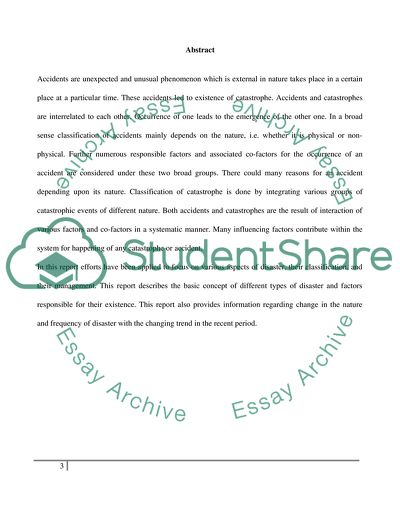Cite this document
(Nature of Accidents and Catastrophes Article Example | Topics and Well Written Essays - 2500 words - 1, n.d.)
Nature of Accidents and Catastrophes Article Example | Topics and Well Written Essays - 2500 words - 1. Retrieved from https://studentshare.org/environmental-studies/1727951-accidents-and-catastrophes
Nature of Accidents and Catastrophes Article Example | Topics and Well Written Essays - 2500 words - 1. Retrieved from https://studentshare.org/environmental-studies/1727951-accidents-and-catastrophes
(Nature of Accidents and Catastrophes Article Example | Topics and Well Written Essays - 2500 Words - 1)
Nature of Accidents and Catastrophes Article Example | Topics and Well Written Essays - 2500 Words - 1. https://studentshare.org/environmental-studies/1727951-accidents-and-catastrophes.
Nature of Accidents and Catastrophes Article Example | Topics and Well Written Essays - 2500 Words - 1. https://studentshare.org/environmental-studies/1727951-accidents-and-catastrophes.
“Nature of Accidents and Catastrophes Article Example | Topics and Well Written Essays - 2500 Words - 1”, n.d. https://studentshare.org/environmental-studies/1727951-accidents-and-catastrophes.


